The Hollywood Sound – Music To Picture
Big-screen scores have evolved over decades of filmmaking, but what really makes a piece of music truly cinematic? Mark Cousins unlocks the secrets of soundtracks… Some of the greatest moments in cinema aren’t just defined by moving images, but by the dynamic combination of music and picture. Films such as Stars Wars, Psycho, The Good, […]
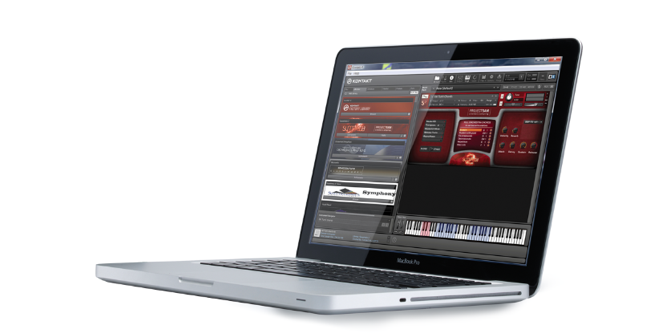
Big-screen scores have evolved over decades of filmmaking, but what really makes a piece of music truly cinematic? Mark Cousins unlocks the secrets of soundtracks…
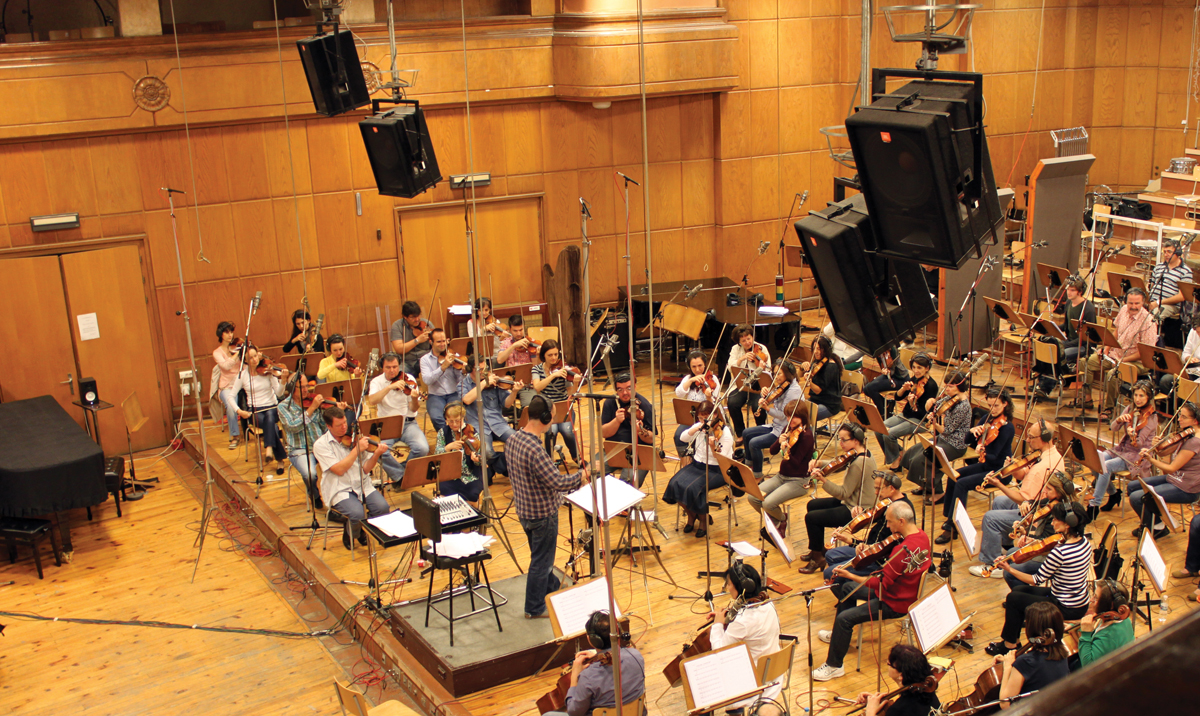
Some of the greatest moments in cinema aren’t just defined by moving images, but by the dynamic combination of music and picture. Films such as Stars Wars, Psycho, The Good, the Bad and the Ugly and Inception have used music as a pivotal component in the storytelling – more than just aural wallpaper, they are a device that a director and composer can actively exploit to enhance the audience experience.
Ultimately, it’s testament to the power of music when allied with the right picture, and, in particular, the visceral way music can illuminate the emotion and feeling behind a scene far better than any moving image.
The journey that music has taken throughout the history of cinema is both a fascinating insight into the changing role of technology and the creative opportunities any screen-based composer can exploit.
In many ways, cinematic music has been defined by both its ability to absorb great musical ideas and conventions of the past (such as a symphony orchestra, for example, or some of the great classical composers of the 19th century), combined with the sonic possibilities of new technology.

Not surprisingly, therefore, film music has been one of the most exciting and progressive avenues for musical development over the last 60 years, arguably eclipsing the work of many concert hall composers.
In this feature we’re going to explore the evolution of film music, and in particular the key ingredients that have come to define the Hollywood sound. With so many cinematic sound libraries appearing to offer the elusive ‘Sound of Hollywood’, as well as increasing the desire to compose and produce music for film and TV, it’s a timely exploration of the key practices and approaches taken with screen music.

Whether you’re scoring a large-scale action movie or composing for the small screen, understanding the way screen music has developed over time and the conventions it has adopted will ultimately inform and enhance your working process.
From the Top
Although few could deny the power of music, its early relationship with cinema was a complicated one, fraught by both the logistical and technical difficulties of aligning music to picture. For early silent films the only option was live music, either performed by a pianist, a small ensemble or organist. In most situations the music was simply improvised, although some of the more ambitious studios and directors would create a suggested cue list of pre-existing music especially selected for the film in question.
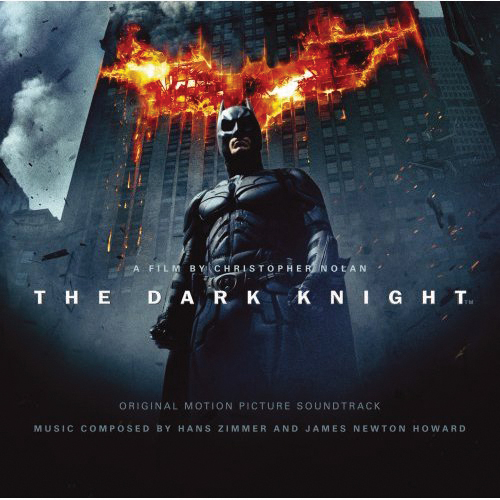
With the introduction of talkies in the 1920s, music could finally be synchronised to picture; although early systems, such as Vitaphone, were fraught with technical problems, either in their ability to maintain synchronisation or the shockingly poor sound quality of printing a soundtrack ‘optically’ to film.

Although systems improved throughout the late 20s it took a while for directors to see the artistic and cinematic potential of synchronised, original music scores. Indeed, it wasn’t until Max Steiner’s music for King Kong in 1933 that the symphonic score finally made its first real impact on the cinematic experience.
Bursting Onto the Scene
The golden age of Hollywood, and the point at which music imprinted itself with a film audience, started with the aforementioned King Kong and continued through to the early 50s. One of the best composers of the era, and somebody who illustrates the ‘melting pot’ of ideas that happened in Hollywood during the 1930s, was Erich Wolfgang Korngold (who eventually won an Oscar for The Adventures Of Robin Hood).
Born into a Jewish home in Brno, Korngold was lured to Hollywood as a means of escaping the rise of the Nazi party. As such, he brought a direct lineage with European romantic classical music, which is why the sound of Hollywood owes much to the likes of Mahler, Strauss and Wagner.
One key composition technique that Erich Korngold brought to Hollywood was the idea of leitmotif, popularised by Wagner. In many ways, Korngold saw film music as a kind of ‘wordless’ opera, composing the music using the same rich, symphonic colours and drama that inhabited a Wagner opera.
Key to this was the leitmotif concept, where characters were given distinct themes that could be re-used and adapted to help shape the narrative journey of the piece. Even to this day, leitmotif is a key component in how film music works and how the director and composer lead you through the narrative of the film.
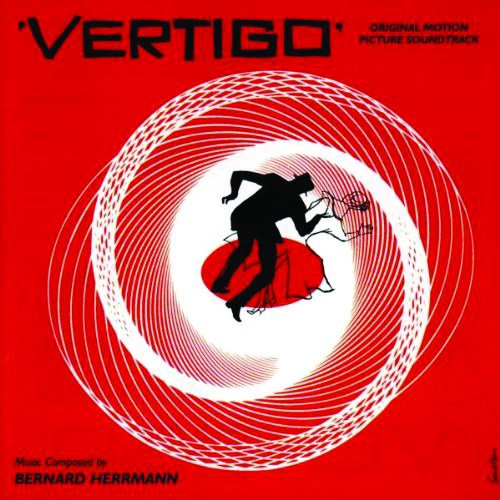
Alfred Hitchcock knew the power of marrying the right music to his images, and his collaborations with the legendary Bernard Herrmann are classics.
Despite inheriting some of the ideas of European classical music, Hollywood wasn’t intent on performing or recording with the stuffiness that had come to be associated with the concert hall. Rather than exclusively playing classical music, many of Hollywood’s musicians were used to moving between musicals, big bands and the film music orchestra – something that had a significant effect on the vibrancy of the playing.
Equally, the sound engineers at the time weren’t afraid to push the technology they had at their disposal, often using creative microphone positioning and a variety of other studio techniques to enhance (rather than just capture) the music they were recording.

A Sound Revolution
Like popular music, it’s interesting to note how developments in technology changed the way composers and directors thought about the role of music. Throughout the 50s, 60s and 70s, therefore, film music witnessed some major innovations, partly in response to developments in recording technology (particularly the advent of stereo recording), but also in response to composers and directors seeing music in a different way. One of the key players in Hollywood’s ‘modernist’ phase was Bernard Herrmann, who’s pairing with Alfred Hitchcock arguably produced some of the some of the most imaginative (and daring) combinations of music and picture ever created.
Through a series of iconic scores for films including Psycho, Vertigo and North by Northwest, Bernard Herrmann demonstrated that sound itself, or more specifically the colour of sound, was just as important as melody and harmony.
In many ways, Bernard Herrmann seemed to actively avoid the romantic trappings of a full-sized symphonic orchestra, often assembling a unique combination of instruments that, for example, favoured woodwind rather than luscious strings.
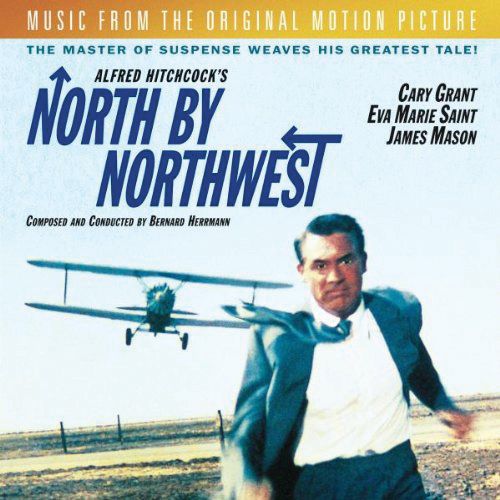
Bernard Herrmann’s most famous score has to be the music for Psycho, which, as a demonstration of his philosophy – and against some of what Hitchcock’s wanted – was scored exclusively for strings. Rather than scoring melodic lines full of romantic vibrato, though, the strings were used in a shockingly violent and atonal way.
The infamous shower scene, for example, was originally intended to be devoid of music, but at Herrmann’s insistence, the addition of his infamous Murder cue complete with its distinctive ‘stabbing strings’ transformed the intensity and impact of the scene.
Click Here For A Guide To Recording A Hollywood Soundtrack
The Sound Design Trap
While much of this move towards sound-based scores can be explained by artistically bold decisions and parallels in contemporary music (which also rejected all forms of traditional melody and harmony), it’s interesting to note how the quality of sound – as noted by Bernard Herrmann himself – may have had a significant part to play. Whereas composers of old could only really ensure the melody translated over poor quality recording and production, ‘modernist’ film composers had far more opportunities for their listeners to hear subtleties in the music.
Indeed, Bernard Herrmann even went so far as to indicate pan positions on some of his scores, demonstrating that studio recording had become an important field of opportunity for the contemporary film composer.
Of course the trap that all ‘sound-based’ composers face is the relation and crossover between music and sound design. Pointedly, The Birds saw Alfred Hitchcock and Bernard Herrmann rejecting music altogether in favour of abstract, electronically generated sound effects (although Bernard Herrmann was still credited as sound consultant). Today’s film world constantly struggles with this phenomenon, both in respect to the complexity of sound design now evident in major blockbusters but also (and more pointedly) its volume, which often drowns out any subtlety in the music!
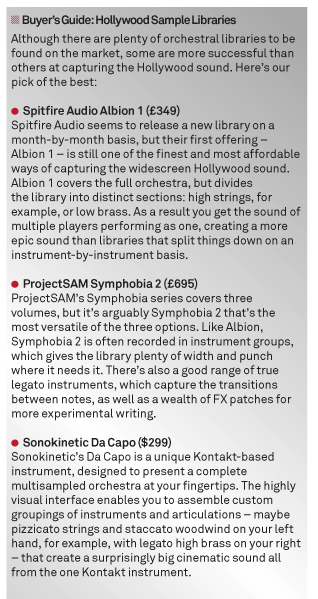
The Birth of the Blockbuster
One of the biggest ironies in the development of film music is that at a time when recording technology was advancing exponentially, Hollywood decided to take its biggest step backwards into the sound of its past. The film that ushered this change was Star Wars, which despite being ahead of its time in respect to special effects actually had some surprisingly ‘old school’ music references.
Shot much like an old serialised B-movie from the 40s or 50s and populated by spaceships that looked decidedly rusty, Star Wars wasn’t in the same ‘shiny’ universe populated by other science fiction films. With a story borrowing much from westerns, combined with a medieval tale of a princess locked in dark castle, it made sense that the music paid a similar reference to the golden days of Hollywood, and in particular the work of Korngold in the 30s and 40s.
Whereas previous science fiction films had alienating soundtracks, Star Wars felt immediately familiar, carefully referencing the aforementioned Korngold along with Gustav Holst’s The Planets, Edward Elgar and Igor Stravinsky.
Leitmotif Mastery
One of the key techniques John Williams returned to with Star Wars was the Korngold/Wagner concept of leitmotif. Indeed it’s hard to separate John Williams’ distinctive leitmotifs from the films they were created for: whether it’s Darth Vader’s imposing Imperial March, The Force Theme, or The Raiders March association with Indiana Jones.

His skill wasn’t just an ability to write a strong melody, though – and remember how important such a melody was as part of the plot of the John Williams’ scored Close Encounters Of A Third Kind – as his real genius was how he strategically deployed the leitmotif.
The key to strong leitmotif writing isn’t just the tune itself (although a memorable hook certainly helps here) but how it’s embedded and quoted in the soundtrack. In E.T., for example, we never hear the theme started fully throughout the first half of the film, instead hearing just short snippets, often played on solo flutes. When E.T. finally takes to the sky on Elliott’s bike we finally have the pay-off and hear the theme in full, played in all its symphonic glory. Deployed in this way, the leitmotif lent an emotional gravity and completeness to the scene that wouldn’t have happened had the theme already been played countless times before.
Following the success of Star Wars, the orchestral Korngold-esque score became a ubiquitous part of the blockbuster experience. What might have been a passing phase of the development of music in film quickly reestablished itself as the de facto sound of Hollywood. Indeed, without Star Wars the use of an orchestra on soundtrack recordings could have easily faded out, replaced by smaller ‘eclectic’ ensembles, like those used by Ennio Morricone, or even pop music, as became the standard throughout the 60s and early 70s.
The orchestra’s reinstatement, therefore, brought about a second golden age of Hollywood, with a string of Spielberg/Williams epics that cemented the idea of a symphony orchestra being at the heart of the Hollywood sound.
Electric Dreams
Despite the apparent success of Star Wars and the flood of other orchestral soundtracks that followed it, the more electronically-driven score was still making slow and steady progress. One key shift came with Vangelis’ scores for Chariots of Fire and, more notably, Blade Runner.
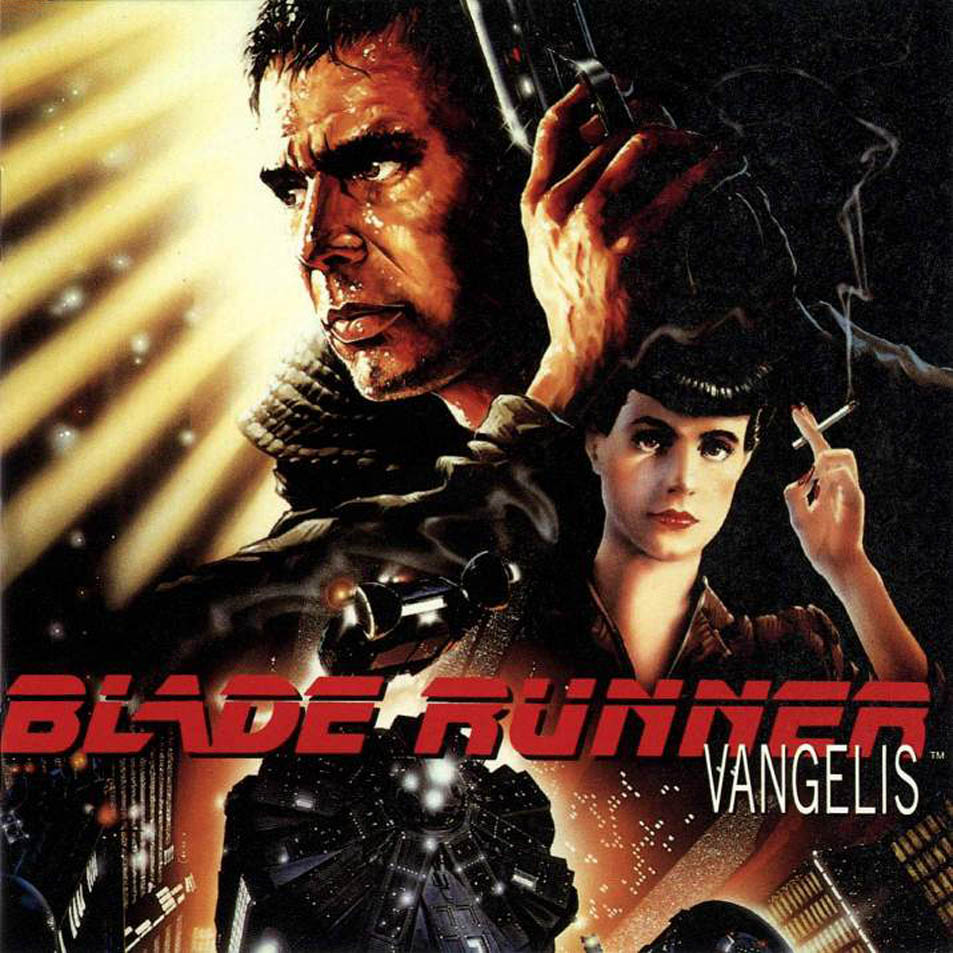
Vangelis’ soundtracks for Chariots of Fire and Blade Runner are landmark works, and remain hugely popular to this day.
Up until these two films, the assumption was that an electronic score could offer little in the way of humanity, thanks to its ‘other world-y’ sound, so perfectly optimised in Forbidden Planet in 1956. Vangelis’ sound world was different, using instruments such as the Yamaha CS80 in an almost symphonic way, all drenched in sumptuous Lexicon 224 reverb that imbued the Blade Runner soundtrack with a tangible sense of atmosphere.
The sound of Blade Runner marks a significant milestone in what we now accept as the contemporary Hollywood sound. Significantly, Blade Runner illustrates that the symphonic orchestra and synthesizer can be equals – that an electronic score needn’t be restricted to conveying a limited number of emotions or feelings. Arguably, Vangelis was ahead of his time, as even he struggled to really capitalise on the success of these first two films, possibly restricted by the limitations of technology available in the early 80s.
Moving into the 90s we saw a resurgence in scores dictated by the director’s record collections (think: any Tarantino film) and the emotive and sparse piano-driven themes laid out by Thomas Newman (Shawshank Redemption, American Beauty) are still being played (and imitated) across films and TV documentaries to this day, but the new century has brought new themes.
Contemporary Hollywood
If there’s one composer who’s wholeheartedly embraced and capitalised on the possibilities of new technology, though, it has to be Hans Zimmer. From relatively humble beginnings (writing the theme tune for the BBC’s Going For Gold back in the 80s), Hans Zimmer has revolutionised the sound of Hollywood and the role of music in film in much the same way as Erich Korngold, Bernard Herrmann and John Williams did before him.
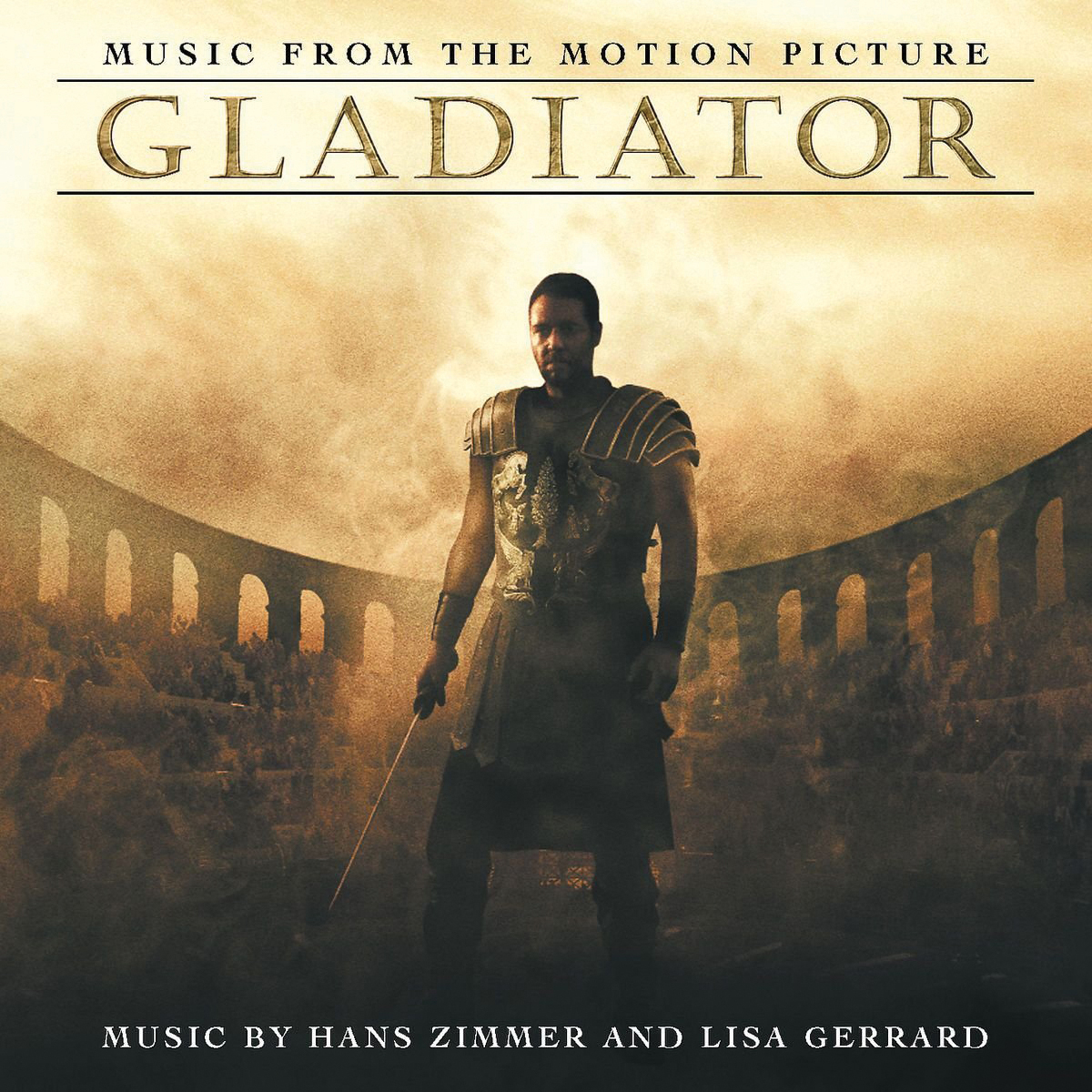
Like a growing number of technology-based media composers, Hans Zimmer is notable for his lack of formal music training. In interviews, he has suggested he spent as little as two weeks learning piano, instead preferring to spend his time ‘modifying’ his instrument to create new sounds. Clearly these early experiences have shaped his approach to music, following a more intuitive approach that blurs the lines between the studio, electronic instruments and the orchestra.
For someone who has grown to have such a large impact on film music, Hans Zimmer’s rise through the ranks has been a great demonstration of dogged determination. His early scores, for example, weren’t the powerful blockbusters action films he’s known for now, but relatively light and breezy numbers such as Driving Miss Daisy, Rain Man and The Lion King.
Although these scores all featured real instruments, Zimmer’s key selling point, which distinguished him from many other composers working at the time, was the extensive use of sampling technology, notably a Fairlight CMI and other early samplers such as the Roland S-760.

With films such as Crimson Tide, The Thin Red Line and Gladiator, Hans Zimmer started to shape a sound that would come to define contemporary Hollywood. One of the most significant developments from a musical perspective was one of scale and impact, understanding that the only way to beat an increasingly powerful use of sound design was to be louder and bigger than the competition! Rather than just working with a live orchestra, therefore, Hans Zimmer’s soundtracks fused samples and real instruments to create a sound of truly ‘larger than Wagner’ proportions.
Sound and Vision
Another interesting distinction of Hans Zimmer’s music is the way it merges the two leading approaches to film music – leitmotif and sound-driven score. Like John Williams, Hans Zimmer’s scores use plenty of leitmotif concepts, but rather than these being melodically or harmonically source they’re often driven by sound.
As such it’s often hard to whistle a tune from a Hans Zimmer soundtrack, but when you hear its sonic fingerprint – the ‘braam’ from Inception, the Joker’s distorted cello ostinato in The Dark Knight, or the thunderous cacophony of drums from Man of Steel – you’ll be instantly transported to the film in question.
In many ways, Hans Zimmer’s sound-driven approach is one that matches the look and feel of contemporary cinema. Visually, the use of colour grading has become an essential part of how a director influences your response to an image on screen, changing the relative hues, saturation or colour balance of each frame. It follows that music – or, specifically, the sound of the music – should also reference these tonal shifts.
As an example, note how Hans Zimmer’s soundtracks tonally match the dark blues and blacks used in Christopher Nolan’s Batman trilogy, blurring sound and vision in one entity. What’s interesting is how linked the music and the pictures become. Whereas Williams’ soundtracks stand up to listening away from their filmic settings, Zimmer’s work doesn’t translate so well. Embedded into a film like Inception, though, and it’s clear that the movie and the film are transformed – both are greater than the sum of their parts.
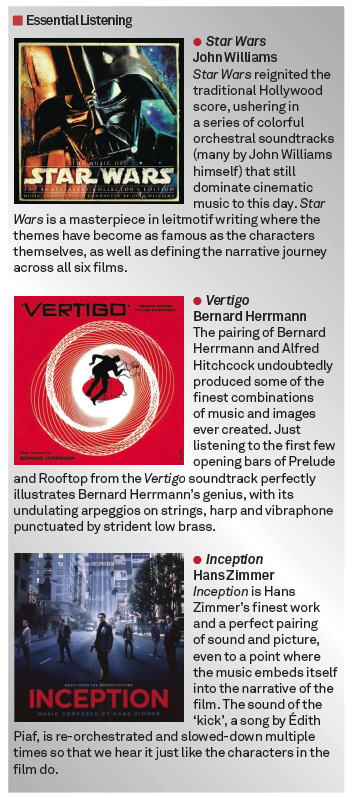
A New Hope
Rather than throwing away the orchestra, as happened in the 50s and 60s, the sound of contemporary Hollywood seems to embrace both the cinematic sound that we all know and love, as well as pushing new sonic boundaries that challenge and alert our ear’s attention. The sound of a 400-year-old musical phenomenon – the symphony orchestra – is still a crucial part of our cinematic experience, yet it isn’t heard in isolation, instead forming part of a wide timbral palette that reflects the scale and proportion of what’s seen on screen. Crucially, the orchestra often forms the humanity of the music while the rest of the sound palette – whether it’s thundering taikos, deep subsonic synths or aggressive drums – creates the energy and driving impact of the cue.
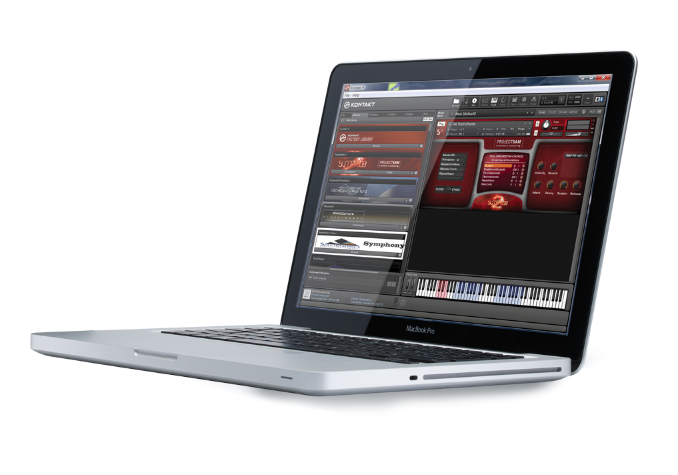
Of course, where film music will go next is anyone’s guess, but there’s little doubt that it will change and evolve in response to changes in filmmaking. Today’s film scores are being driven by a lot of new talent that takes elements of all that we have discussed in this feature. Composers include the likes of Clint Mansell (Requiem for a Dream, and Black Swan), Cliff Martinez (Drive, and all his work with Steven Soderbergh) and Johnny Greenwood (There Will Be Blood).
Yet maybe John Williams returning to score the new series of CGI-light Star Wars films will see a return to the older, more tuneful days of film music, or will the lines between sound design and music become even more blurred?Excitingly, though, technology has evolved to the extent that anyone can now start producing cinematic music with little more than a laptop and a well-stocked collection of Kontakt libraries. Who knows, maybe the real future of Hollywood lies with one of these musicians and the radical new ideas they might bring…